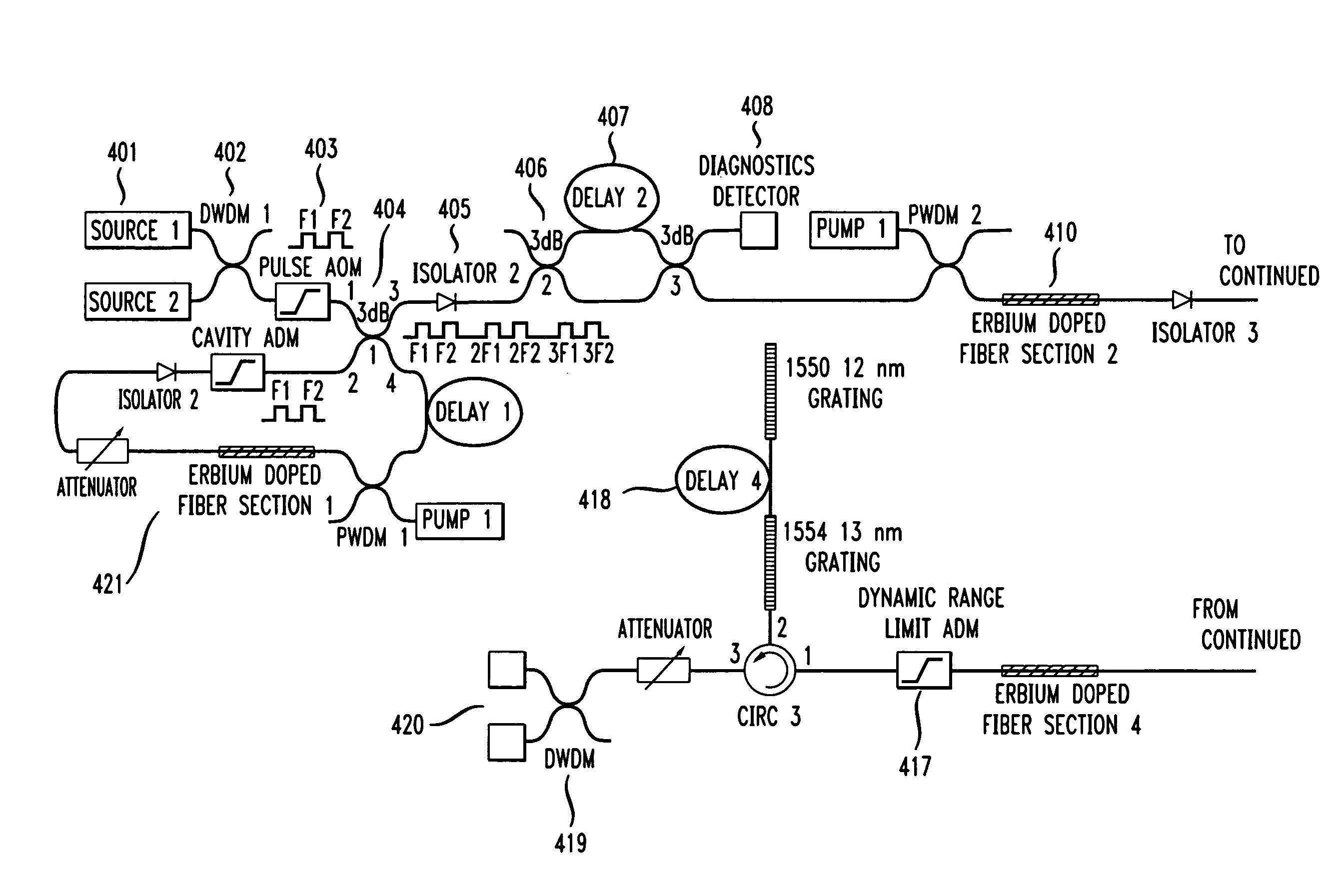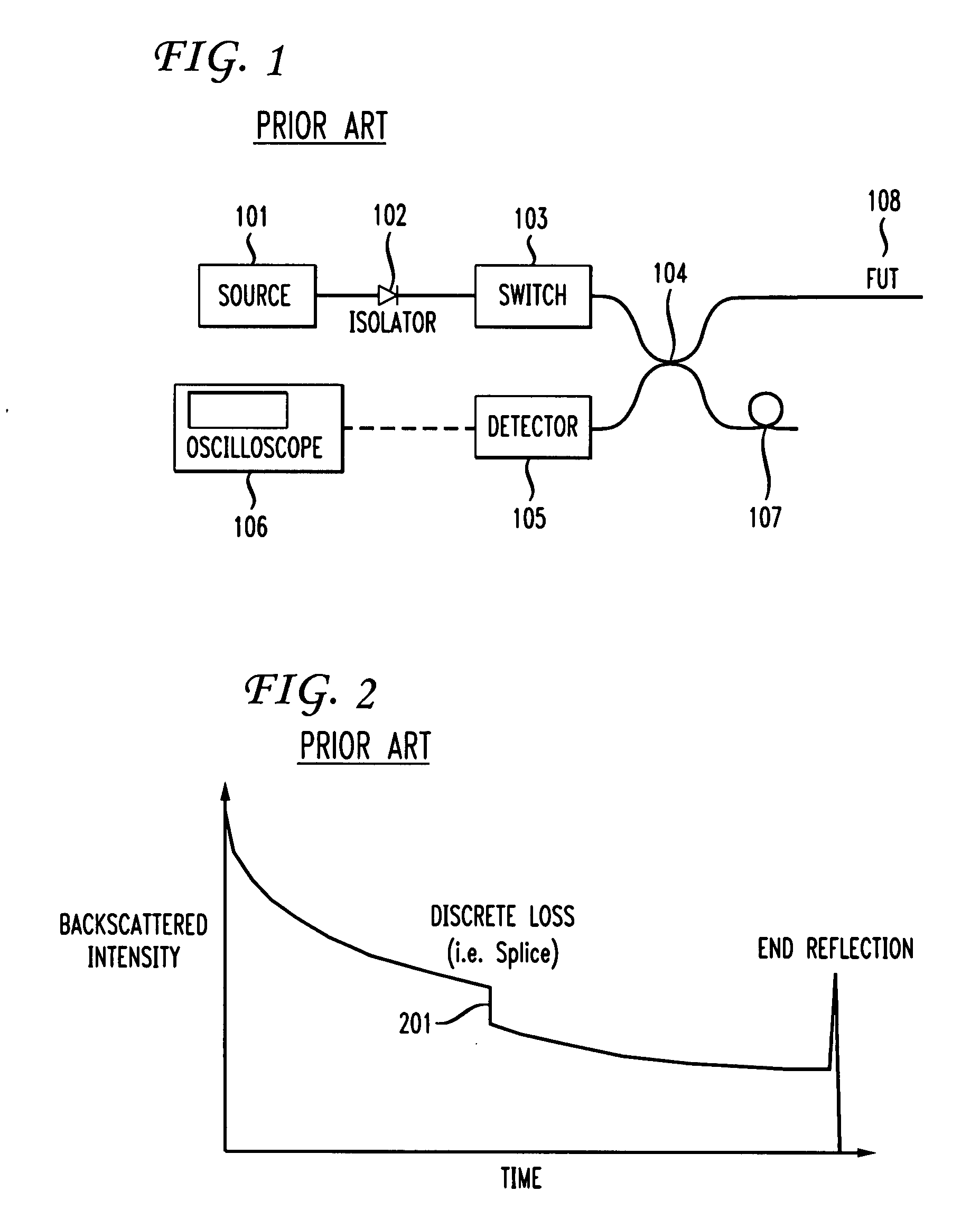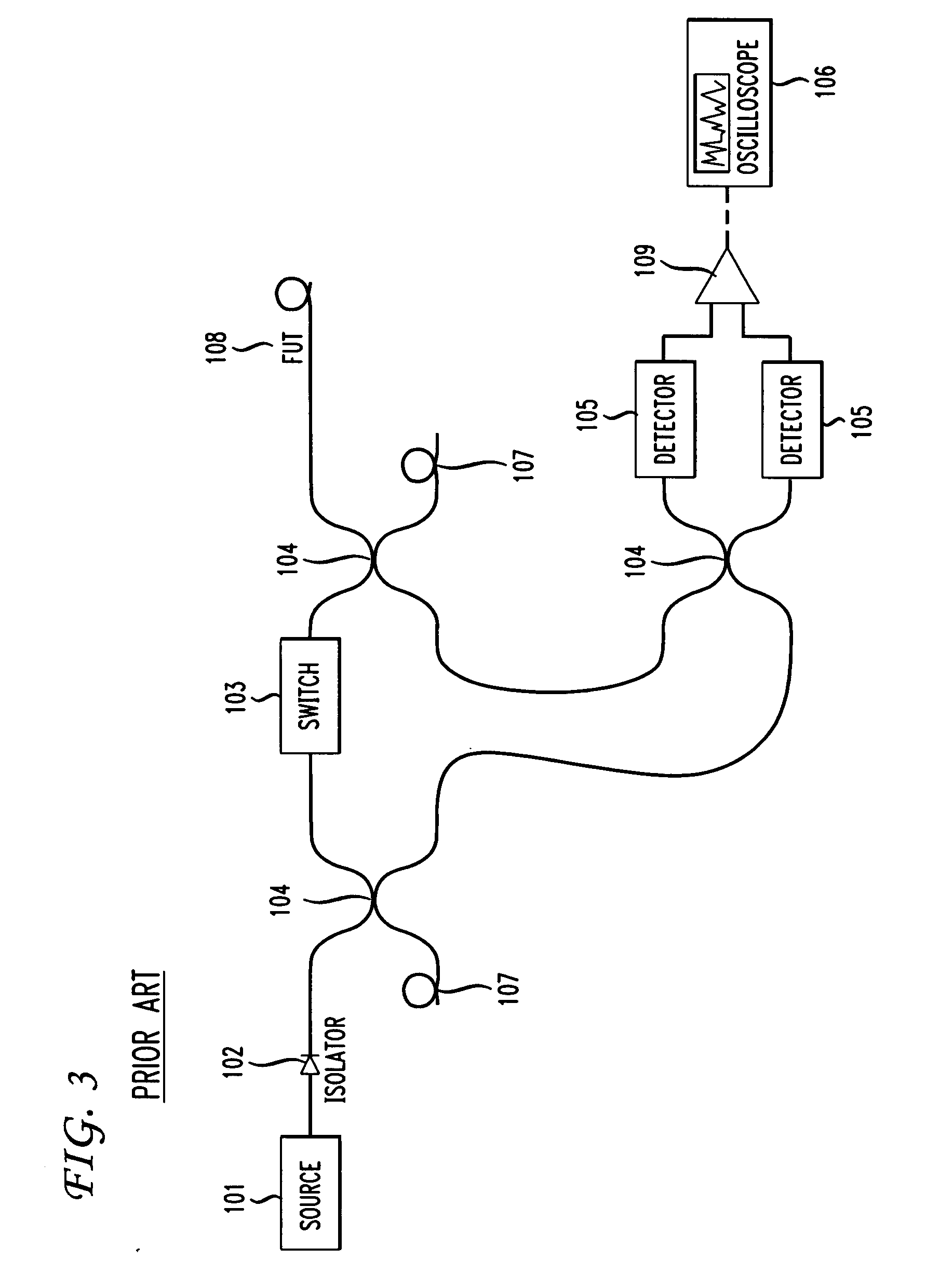Method and apparatus for acoustic sensing using multiple optical pulses
a technology of optical pulses and acoustic sensing, applied in the field of sensing signals, can solve problems such as failures, lack of redundancy within these networks, and significant cost to the network operator in both customer dissatisfaction and loss of revenue,
- Summary
- Abstract
- Description
- Claims
- Application Information
AI Technical Summary
Benefits of technology
Problems solved by technology
Method used
Image
Examples
Embodiment Construction
[0020]Overview
[0021]The present invention involves an improved optical time-domain-reflectometry technique that may be used to detect acoustic waves in the vicinity of buried optical fibers. The invention will first be described first at a high level in terms of a specific embodiment. Thereafter the invention will be described with greater specificity.
[0022]The inventive technique, in one embodiment, involves launching optical pulses into a buried optical fiber and detecting the signal backscattered by the fiber. The optical frequency of one pulse within a pair of pulses differs slightly from the optical frequency of the other pulse within the pair of pulses. This frequency difference (or separation) itself varies from one pair of pulses to the next. This variation in frequency difference results in a detected backscattered signal having a phase that is modulated by an acoustic signal in the vicinity of the fiber, allowing decoding of the disturbance with improved signal to noise ra...
PUM
| Property | Measurement | Unit |
|---|---|---|
| frequency | aaaaa | aaaaa |
| frequency | aaaaa | aaaaa |
| frequency | aaaaa | aaaaa |
Abstract
Description
Claims
Application Information
 Login to View More
Login to View More - R&D
- Intellectual Property
- Life Sciences
- Materials
- Tech Scout
- Unparalleled Data Quality
- Higher Quality Content
- 60% Fewer Hallucinations
Browse by: Latest US Patents, China's latest patents, Technical Efficacy Thesaurus, Application Domain, Technology Topic, Popular Technical Reports.
© 2025 PatSnap. All rights reserved.Legal|Privacy policy|Modern Slavery Act Transparency Statement|Sitemap|About US| Contact US: help@patsnap.com



